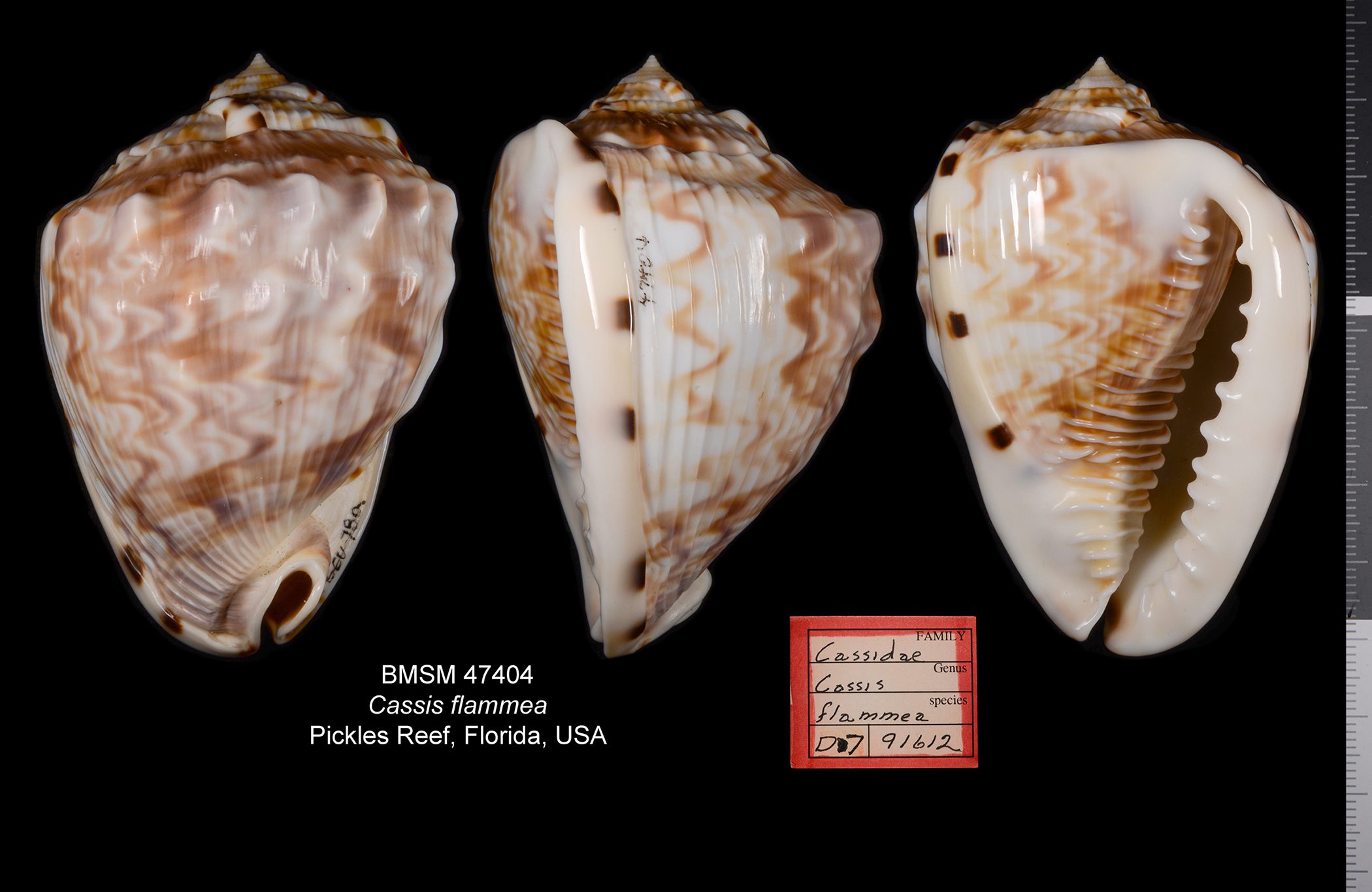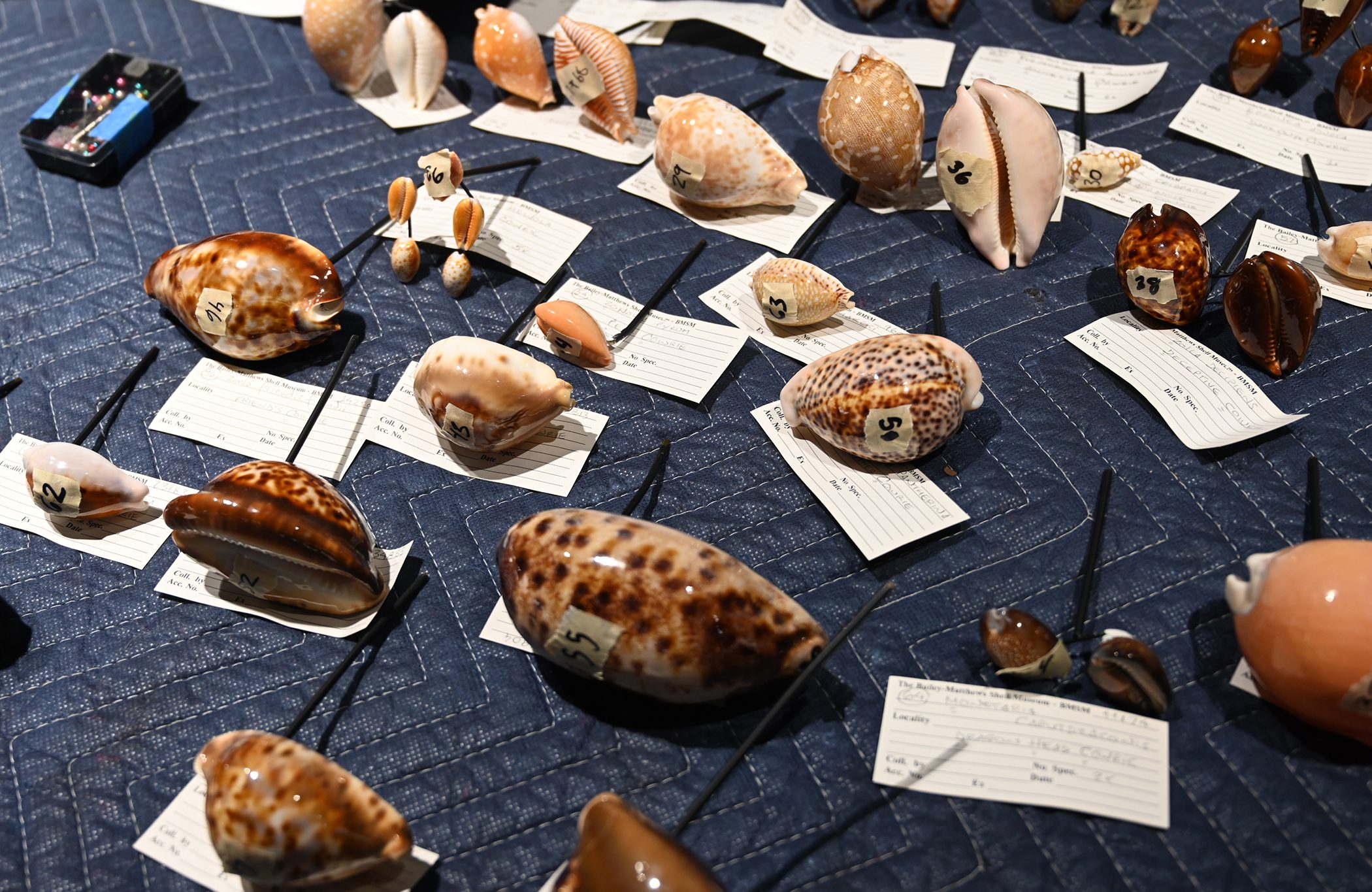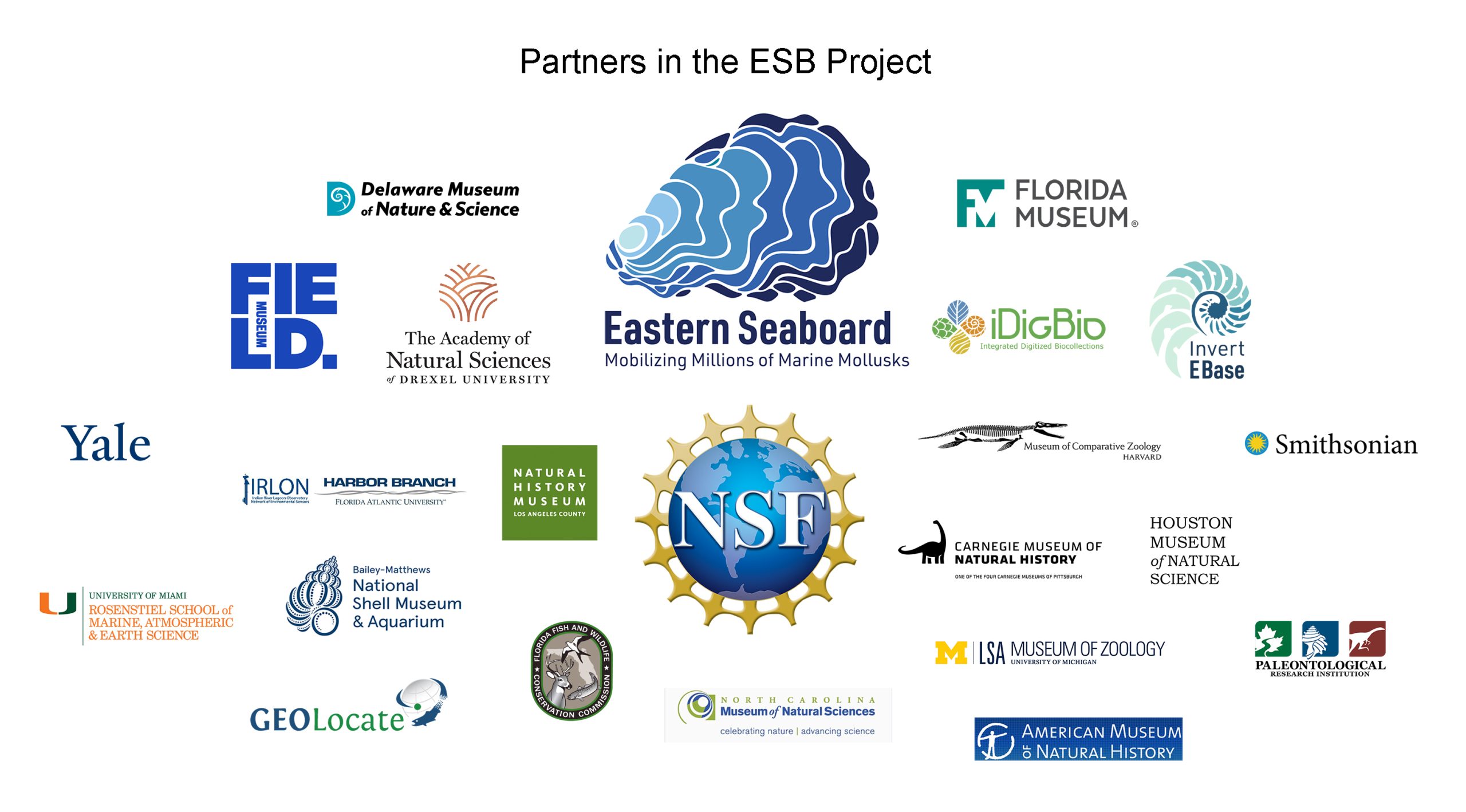True conchs in the family Strombidae have large, camera-type eyes that are extra well-developed and more complex when compared to the eyes of other gastropods.
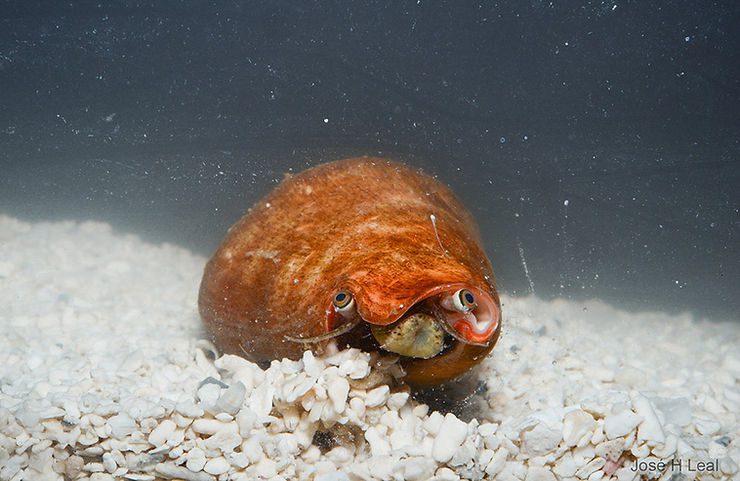 Strawberry Conch, Conomurex luhuanus. Photo by José H. Leal.
Strawberry Conch, Conomurex luhuanus. Photo by José H. Leal.
In Strawberry Conchs, Conomurex luhuanus, the eye contains a hemispherical lens, a cornea, a pupil surrounded by a pigmented iris, a vitreous body, and a cup-shaped retina consisting of several layers. The eye is very large in relation to body size and is very sophisticated, even when compared with those of other true conch species.
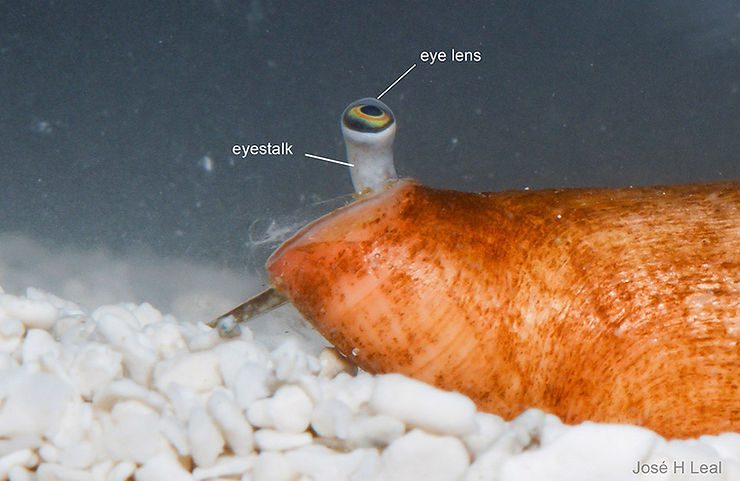 Eye and eyestalk in the Strawberry Conch, Conomurex luhuanus. Photo by José H. Leal.
Eye and eyestalk in the Strawberry Conch, Conomurex luhuanus. Photo by José H. Leal.
Research recently published* by Alison R. Irwin of the University of Bristol and Natural History Museum (London) and her collaborators, shows that vision in Strawberry Conchs is more complex than originally thought, with at least six cell types in their retinas, more than in other gastropods. Their study used state-of-the-art behavioral study techniques and microscopical methods to gauge the extent of visual functions in the species. Irwin and her collaborators demonstrated that Strawberry Conchs can detect objects as small as one degree within their visual field. They are also highly sensitive to contrast between an object and its background. The defensive response driven by such enhanced visual acuity may be advantageous for early detection of approaching predators.
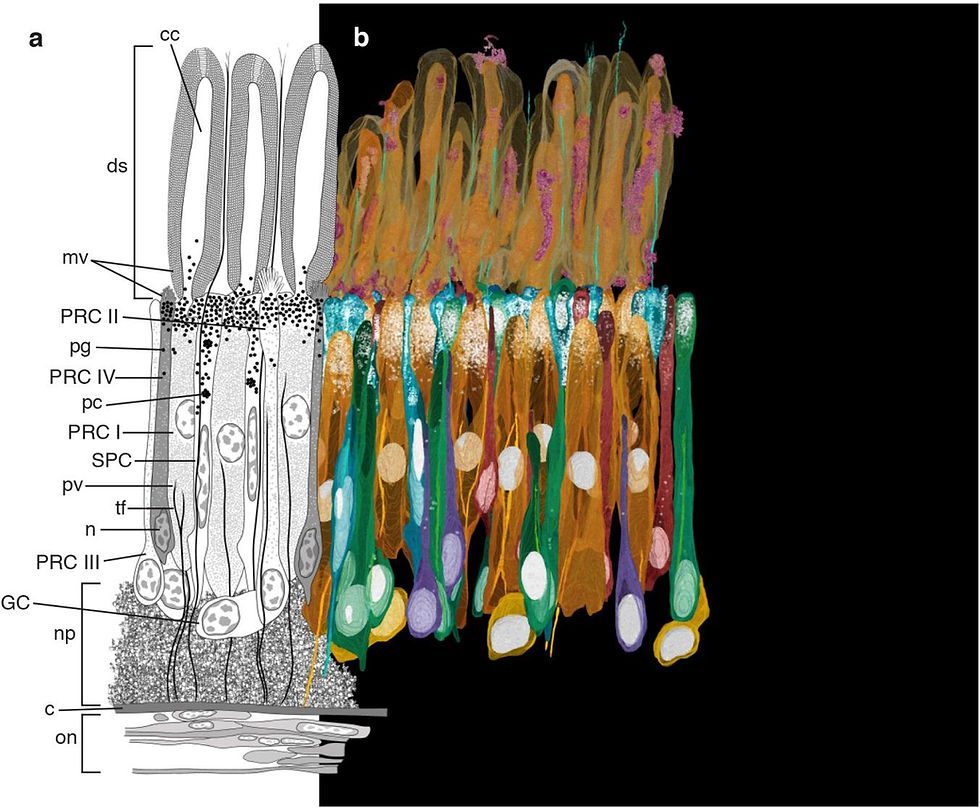 Figure 5 in Irwin et al. (2022). Complex retina structure in Conomurex luhuanus, reconstructed using artificial color-coding. Each color represents a different cell type.
Figure 5 in Irwin et al. (2022). Complex retina structure in Conomurex luhuanus, reconstructed using artificial color-coding. Each color represents a different cell type.
Read the work here:
*Irwin, A., S.T. Williams, D.I. Speiser, & N.W. Roberts. 2022. The marine gastropodConomurex luhuanus (Strombidae) has high-resolution spatial vision and eyes with complex retinas. Journal of Experimental Biology 225(16) DOI: 10.1242/jeb.243927
